Iran's Foreign Minister Tells Assad Western Axis Is Weakening
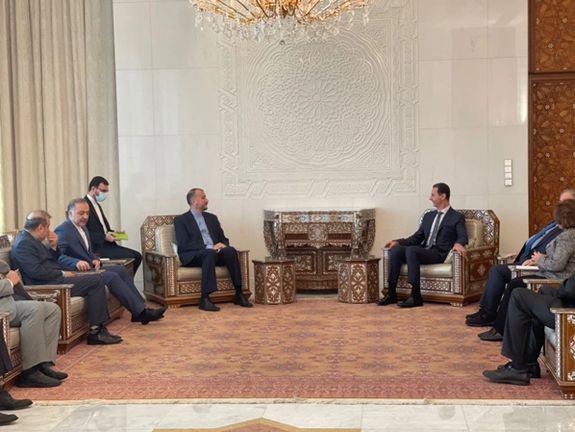
Hossein Amir-Abdollahian, foreign minister of the Islamic Republic of Iran visited Syria on Saturday and met with president Bashar al-Assad in Damascus.

Hossein Amir-Abdollahian, foreign minister of the Islamic Republic of Iran visited Syria on Saturday and met with president Bashar al-Assad in Damascus.
The Islamic Republic News Agency, IRNA, reported that Amir-Abdollahian praised existing close relations and cooperation between Tehran and Damascus and said, “Conditions have shifted in Syria’s favor.”
Assad’s government has been isolated and sanctioned by Western and other countries since it began using military force against opponents after protests during the 2010 Arab Spring in the region.
Iran provided Assad with full military and substantial financial backing as the conflict turned into a civil war. Estimates say thousands of Iranian servicemen and Afghan and other proxy forces have been killed in Syria. Senior Iranian officials have said Iran has spent more that $30 to support Assad.
IRNA said that the Iranian foreign minister congratulated Assad for his government’s “military and international” successes and added that the diplomatic atmosphere as he witnessed during the United Nations General Assembly has shifted favor of Damascus.
Amir-Abdollahian also spoke about events in Afghanistan and said the US withdrawal shows the weakening of the Western axis.
Before arriving in Syria, Iran’s foreign minister visited Russia and Lebanon. Russia and Hezbollah in Lebanon are two other key allies of Assad.
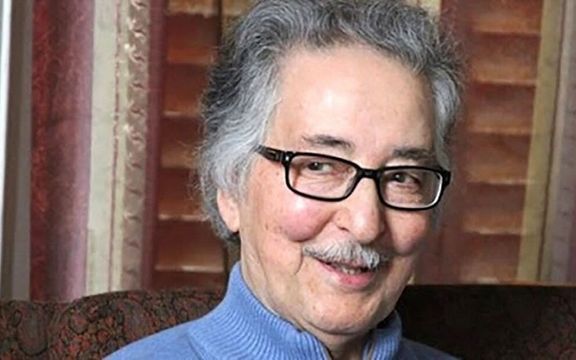
The Islamic Republic of Iran's first President, Abolhassan Banisadr who was ousted by clerics passed away at age 88 in a Paris hospital after 40 years in exile.
Banisadr who was the Foreign Minister in Iran's interim government that was set up after the 1979 Islamic revolution, was elected President with 10.8 million votes or 76.5 percent of ballots cast (67% of the electorate) in February 1980 and remained in power until June 1981 when hardliners at the Iranian parliament (Majles) ousted him.
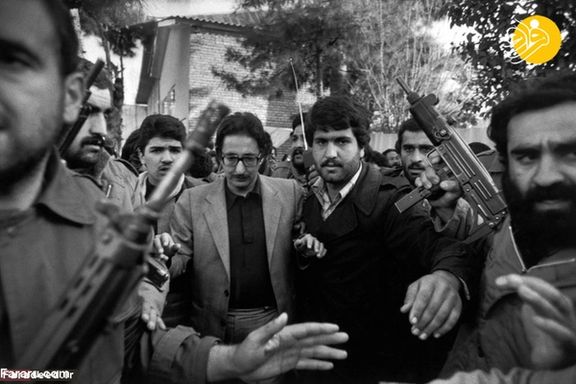
The son of a grand ayatollah in Hamadan, he was a student activist during the tumultuous 1950s and early 1960s when he supported Prime Minister Mohammad Mossadeq, who increasingly opposed Mohammad Reza Shah, and finally left Iran for France in 1963 where he studied economics while continuing his political activism against the monarchy.
In 1979, when Ayatollah Ruhollah Khomeini arrived from his exile in Iraq to Paris, Banisadr and his friends helped him find accommodation and settle in a Paris suburb. Khomeini trusted him as he knew his father very well. Then, Banisadr was seen interpreting for the ayatollah in interviews with international reporters. He came back to Iran with Khomeini in February 1979.

His presidency was constantly challenged by powerful clerics in Khomeini’s inner circle led by Mohammad Beheshti, Akbar Rafsanjani and Ali Khamenei who first ousted the "liberal' government of Prime Minister Mehdi Bazargan, and then completed their takeover by striping Banisadr of the presidency.
In an interview with Iran International TV, the Secretary of Iran's National Front Hossein Mousavian characterized Banisadr as "A man of principles." Banisadr was a member of the pro-Mossadeq national Front of Iran before the 1979 revolution. While living in Paris as a young man, Banisadr led the Islamic wing of the National Front that was known at the time as the Islamic Association of Students.
Iran analyst Morteza Kazemian said on Iran International TV that Banisadr was "an independent nationalist figure, who believed in Iran's territorial integrity and strived to strengthen social movements in Iran and fight clerical despotism."
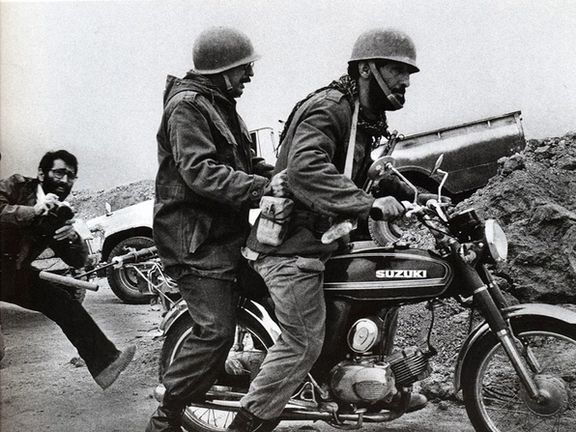
Kazemian also said that Banisadr adhered to his "principles" and that was probably why the Iranian government attempted to assassinate him in Paris at least twice.
Opposition figure Hassan Shariatmadari said in another interview with Iran International TV on Saturday that "Banisader was a true pro-Mossadeq political figure who supported Iran's independence and fought for justice and freedom."
According to Shariatmadari, Banisadr's testimony at the court investigating the Mikonos case in Germany, where he exposed the regime's state-sponsored terrorism and assassination of opposition figures, caused a major disgrace for the Islamic government."
Shariatmadari said that "Banisadr strongly opposed the Islamic Republic's underlying theory of the Guardianship of Chief Jurisconsult (Velayat Faqih) which led to the totalitarian regime we see as clerical rule in Iran today." He added that Banisadr started a struggle against the clerical rule but had no chance to win, yet he adhered to his principles and left an example of a struggle against dictatorship.
Banisadr's critics say he was mistaken in the early 1980s believing that Khomeini was a democratic leader and failed to realize that the founder of the Islamic Republic was a populist who deceived everyone with his democratic slogans. Critics inside Iran, mainly clerics who always opposed him, including former President Akbar Rafsanjani have said that Banisadr was misled to believe that more than 11 million votes he won in the presidential election made him superior to everyone else, mindless of the fact that this was first of all a vote to the Islamic regime and its leader Ayatollah Khomeini.

The US Department of the Treasury removed a large Iranian industrial group from its list of sanctions on Friday, as nuclear talks with Iran remain suspended.
An announcement by the Treasury said the Mammut Industrial Group, also known as Mammut Industries and its subsidiaries were no longer under United States sanctions.
Mammut Industries and three of its main executives/shareholders were put in the sanctions list in were sanctioned in September 2020 by the Trump administrationpursuant to Executive Order 13382, issued by President George Bush in 2005, targeting “weapons of mass destruction and their proliferators and supporters.” The executive order threatened fines, imprisonment, and freezing assets.
The Mammut Industrial Group and its subsidiaries are private companies with thousands of employees in Iran, were accused by the US to have supplied "military-grade, dual-use goods" to Iran’s Aerospace Industries Organization and specifically, Shahid Hemmat Industrial Group, which makes liquid-propelled missiles.
In early July, the three individuals, Behzad Daniel Ferdows, Mehrzad Manuel Ferdows, and Mohammad-Reza Dezfulian were all excluded from the Specially Designated Nationals and Blocked Persons List of the Treasury’s Office of Foreign Assets Control (OFAC).
At the time, the Treasury in a statement said that "These delistings do not reflect any change in US government sanctions policy towards Iran,” a Treasury spokesman told Reuters anonymously. “They have nothing to do with ongoing JCPOA negotiations in Vienna.”
The Biden Administration, refuting former president Donald Trump’s decision to withdraw from the Joint Comprehensive Plan of Action (JCPOA) in 2018, announced its intention to return to the agreement. A round of talks began in Vienna with the participation of the remaining signatories of the deal, with the US indirectly negotiating with Iran on the sidelines.
After six rounds of talks Iran suspended the meetings in June saying its new president needed time to form a government. But two months after Ebrahim Raisi (Raeesi) came to office, Tehran is still not ready to resume negotiations.
The United States and its European allies have become concerned and have been urging Iran to return to the negotiating table, citing Tehran’s continued enrichment of uranium.
The Treasury’s announcement on Friday did not provide any explanation for the removal of Mammut and its subsidiaries, simply listing the delisted entities with their legal names and addresses.
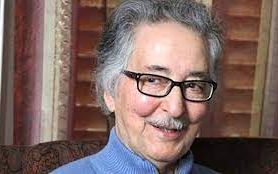
The first president of the Islamic Republic of Iran, Abolhassan Banisadr who was elected after the monarchy has died in exile, where he lived since 1981.
Banisadr, a lay political activist who came to support Ayatollah Ruhollah Khomeini during the Iranian revolution in 1978, was elected president in February 1980, while clerics were consolidating their power at the expense of leftist and nationalist revolutionary groups.
Banisadr also served as overall war commander once Iraq suddenly attacked Iran in September 1980.
As tensions increased between leftists and clerics, Banisadr was seen as a non-clerical politician loyal to Khomeini, the founder of the revolution, but also supporting the right of all groups to operate without hindrance.
As street clashes increased between the clerical forces and opposition groups led by the Mujahedin-e Khalq, Banisadr was forced to flee the country an live in exile in Paris for 40 years.
Banisadr cofounded the National Council of Resistance of Iran in 1981 with the Mujahedin-e Khalq Islamic-leftist opposition group.
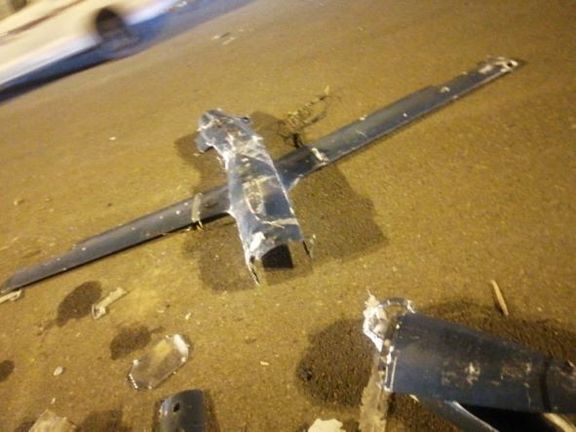
Ten people were injured in two explosives-laden drone attacks at King Abdullah airport in the southern Saudi city of Jizan late on Friday and early on Saturday.
There was no immediate claim of responsibility by Iran-backed Houthis, who regularly launches drone and missile attacks targeting the gulf kingdom.
The latest attack comes as Saudi Arabia and Iran are engaged in talks to address tensions in their relations that have especially prevalent since they broke diplomatic ties five years ago.
Iran’s foreign minister Hossein Amir-Abdollahian in a visit to Lebanon on Thursday and Friday emphasized that the talks are on the right track and highlighted their importance for regional security.
Six Saudis, three Bangladeshi nationals and one Sudanese were injured in the first attack, Saudi state media said, citing a coalition spokesman. Some of the airport's facade windows were shattered in the attack, the spokesman said.
A second explosives-laden drone was intercepted early on Saturday, the coalition said, without giving details on any injuries or damages.
The military coalition intervened in Yemen in 2015, backing forces of the ousted government of President Abdrabbuh Mansur Hadi and fighting the Iran-aligned Houthi group.

After visiting the Bushehr nuclear power plant Friday, President Ebrahim Raisi said that atomic energy would play an increasing role in generating electricity.
During his one-day visit to Bushehr, in southern Iran, Raisi (Raeesi) said the current 1,000-megawatt (MW) capacity of Iran’s sole nuclear power plant would be tripled with further development, and that the Atomic Energy Organization of Iran was committed to increasing production from nuclear power to 10,000 MW.
Construction began in 2017 on two new nuclear reactors, due for completion in 2024 and 2026 at Bushehr with a projected combined capacity of 2,100 MW. The work follows a 2014 agreement between Iran and Rosatom, Russia's State Atomic Energy Corporation, which carried out most of the construction of the first reactor and provided fuel when it began operating in 2011.
With electricity generation at around 50,000-56,000 MW in the past few years, rising no more than 2,000 MW a year, Iran has struggled to meet consumption that has been rising and is encouraged by subsidized prices.
With an annual average of 300 sunny days in over two-thirds of the country Iran has great potential for solar energy, but renewables including hydro-power account for 7 percent of Iran’s energy generation compared to 90 percent from natural gas.
It is not clear why the government does not invest in renewable energy instead of nuclear reactors, especially given the frequent occurrence of earthquakes in the country that could pose a ganger to nuclear plants.
Iran’s daily electricity consumption reached 64,000 MW June this year, leaving a shortfall of around 10,000 MW. With first international and later United States sanctions during most of the past decade, the government has struggled to renew ageing power plants and grid amid estimates that 10 percent of electricity is lost during transmission. Drought this this year has brought a reduction in hydroelectric power, 15 percent of which comes from dams.
The situation has resulted in higher electricity imports from neighboring countries and a reduction in electricity exports to limit outages in cities and damage to industries including agro-food.
There has been controversy over cryptocurrency mining, which makes heavy demand on electricity. Some argue that around 7 percent of global cryptocurrency mining takes place in Iran, due to one of the world’s cheapest electricity tariffs and the advantages e-currencies offer in enabling trade away from United States scrutiny. Estimates of energy demand from this miningrange from 300 MW to 3,000 MW.